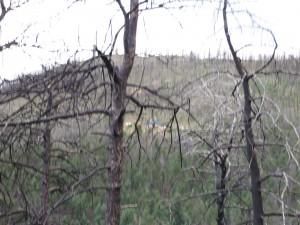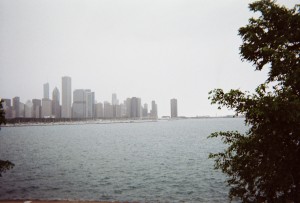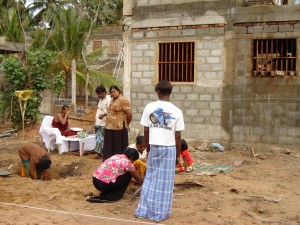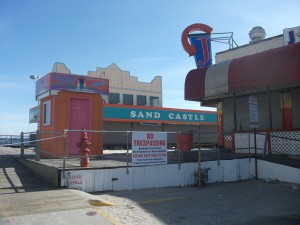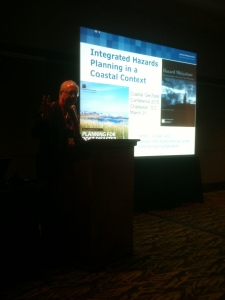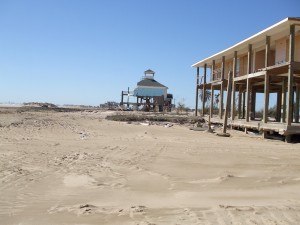 As I write this today, representatives of 190 nations are in Paris apparently have reached a historic consensus on a new climate agreement. Because I am not there and you will read about it in the news soon enough, this article is not about that agreement, but about the very practical concept of community resilience. No matter what the nations of the world decide, communities must face the very real impacts of climate change and of all natural disasters facing them. I am going to rely heavily on a lecture I delivered on October 22 at Iowa State University as a guest of its lecture series.
As I write this today, representatives of 190 nations are in Paris apparently have reached a historic consensus on a new climate agreement. Because I am not there and you will read about it in the news soon enough, this article is not about that agreement, but about the very practical concept of community resilience. No matter what the nations of the world decide, communities must face the very real impacts of climate change and of all natural disasters facing them. I am going to rely heavily on a lecture I delivered on October 22 at Iowa State University as a guest of its lecture series.
Before discussing resilience, however, I want to underscore the urgent reasons why the world has been gathered in Paris for the past two weeks, even in the face of security scares arising from terrorist activities there over the past year. The theory that greenhouse gases affect global temperatures by trapping the sun’s heat that would otherwise radiate back into space has been around since the late 19th century. In 1958, the Scripps Institution of Oceanography began measuring the concentration of carbon dioxide, the primary greenhouse gas, in the atmosphere at the Mauna Loa Observatory in Hawaii. At the time, it was already at 316 parts per million, above the historic level of 280 preceding the modern industrial age, in which we have pumped huge quantities of greenhouse gases into the air through the burning of fossil fuels. The level has climbed steadily ever since and has just recently passed 400. Scientists have already determined that 350 is the highest safe level for maintaining global temperatures within the evolutionary range of human history. Thus, we scramble to find ways to slow the rise and eventually return to that level, which prevailed around 1988. As we cope with the impacts of these higher levels with increased weather volatility and sea level rise, the need for communities to adapt to the new circumstances has become increasingly compelling and urgent. Some are clearly more ready than others for a variety of reasons, including governmental capacity and political will.
The concept of resilience is at the center of much current practice and discussion in the field of disaster recovery, but it is actually much broader. The Rockefeller Foundation has been arguing that it really relates not only to shocks—events that present immediate threats such as natural disasters—but also to chronic stressors, which can be forces that strain the resources of a community over an extended period of time, such as high crime, pollution, or poverty. Certainly, the inability to cope with those chronic stresses can set up a community for much more calamitous response in the face of sudden shocks. Rockefeller, however, is using the concept of resilience in reference to cities in its 100 Resilient Cities program, and some other uses may demand different frameworks for the issue.
In the lecture at Iowa State University, “Holistic Approaches to a Resilient Future,” I undertook a quick overview of some of the definitions of resilience that span the different perspectives within which it has been used. I’d like here to focus on those definitions and some closing comments that followed them.
While stating that my overview did not necessarily contain the best or the most definitive definitions, I suggested it was at least a representative sample. I started by noting that the concept largely originated in the field of ecology, the study of natural systems, and offered this definition from the Stockholm Resilience Centre:
Ecosystem resilience is a measure of how much disturbance (like storms, fire or pollutants) an ecosystem can handle without shifting into a qualitatively different state. It is like the capacity of a system to both withstand shocks and surprises and to rebuild itself if damaged.
Nature left to itself tends to repair the damage from storms and natural events, but we have often compromised the ecosystems that support us, such that they do not recover as well or at all in the face of major shocks. But the concept of resilience has also been applied to engineered, or physical, systems, and I then offered this definition from a professional reference work, Resilience Engineering in Practice:
The intrinsic ability of a system to adjust its functioning prior to, during, or following changes and disturbances, so that it can sustain required operations under both expected and unexpected conditions.
Here, the focus is not on the resilience of nature itself, but on our ability to create or design systems that are capable of continuing to function in the face of adverse circumstances.
But can people themselves be resilient? Obviously, the answer is yes, and we frequently talk about individuals in that way, but what about whole communities or groups? The Stockholm Resilience Centre offers a different definition in a social context:
Social resilience is the ability of human communities to withstand and recover from stresses, such as environmental change or social, economic, or political upheaval. Resilience in societies and their life-supporting ecosystems is crucial in maintaining options for future human development.
The point is that, while communities tend to have their own ethos and unique human resources, they are not naturally self-governing. Governance in fact is a well-learned art that involves leadership by some, passive acceptance by others, and many shades of involvement in between. Can governance itself be resilient? I offered the following definition offered by some urban planning scholars in a 2009 article in the Journal of Environmental Planning and Management (52 (6): 739-56:
Instead of repeated damage and continual demands for federal disaster assistance, resilient communities proactively protect themselves against hazards, build self-sufficiency, and become more sustainable. Resilience is the capacity to absorb severe shock and return to a desired state following a disaster. It involves technical, organizational, social, and economic dimensions. It is fostered not only by government, but also by individual, organization, and business actions.
By then, I felt the audience might be struggling to keep track of the many nuances embedded in those more specific definitions, so I ended the overview with the much simpler statement that the National Academy of Sciences used in its landmark 2012 report, Disaster Resilience: A National Imperative. It defined resilience as simply
the ability to prepare and plan for, absorb, recover from, and more successfully adapt to adverse events.
I then noted that resilience bears an important relationship to the concept of sustainability, which gained prominence following a 1988 United Nations report, Our Common Future. Borrowing from what I wrote in our own APA Planning Advisory Service Report from a year ago, Planning for Post-Disaster Recovery: Next Generation, I stated that fundamentally, resilience allows a community to respond to and recover effectively from specific events; sustainability is a frame of reference that aims to preserve for future generations the resources and opportunities that exist for current generations. Resilience can help to ensure that those resources and opportunities are not squandered through poor preparation for adverse events. It is not in and of itself, however, a broad enough framework for the more long-term goals of truly visionary planning. The two concepts need to work hand in hand.
It is important to understand some of what stands in the way of building resilient communities, so I spent a few minutes summarizing some key points in this regard:
- Lack of trust in government. I noted that the source of distrust can be very different, ranging from historic racial and social inequities to a deliberate view of government as the enemy. The former, I noted, was a huge factor in recovery from Hurricane Katrina in New Orleans, where a host of such inequities poisoned the atmosphere and sometimes undermined planning. The latter is typified by the Tea Party and similar conservative movements, where the aim often seems to be to undermine faith in government by making it incapable of effective response. Exactly how that leads us to any sort of positive future has never been clear to me.
- Procrastination. Human beings are capable of a good deal of denial, and the willingness to postpone actions to address vulnerabilities that may not be exposed in a mayor’s term of office is rampant in local government. Yet there are statesmen among us who care about their legacy and perceive the need for action to reduce a community’s level of risk. I closed by borrowing a slide from Abby Finis, of the Great Plains Institute, who had concluded a presentation earlier in October at the Sustainable Communities Network annual conference in Dubuque, Iowa, by quoting me from the PAS Report cited above: “It is impossible to know when a community’s moment of truth will come, but procrastination clearly isn’t a viable option.”
All of this points to a need for visionary champions, whether they be citizen activists or political leaders, who will advocate for better planning for resilience on a sustained basis. These people tend to foster inclusive dialogue to help bring the public aboard with a heightened understanding of the problems their communities face and who then help create the very success stories we need to inspire others. Rebecca Solnit talks about such people in her inspiring book, A Paradise Built in Hell.
But there is nothing terribly new about this. Communities faced with disaster have been rising to the occasion for a long time. Chicago drastically upgraded its building codes after the Great Chicago Fire in 1871, which remains a primary reason you will find so much masonry construction in the city. If we were able to learn from a disaster nearly 150 years ago, before the modern concept of resilience was even in active use, why can we not learn far more today? The object lessons are plentiful. Even before Hurricane Katrina launched a boatload of new books addressing disaster recovery, Lawrence J. Vale and Thomas J. Campanella compiled examples from around the world in The Resilient City: How Modern Cities Recover from Disaster. What’s new is that at last we are consciously thinking about resilience before disaster, instead of waiting until it strikes. That’s important in view of the climate adaptation challenges that lie ahead.
Jim Schwab

